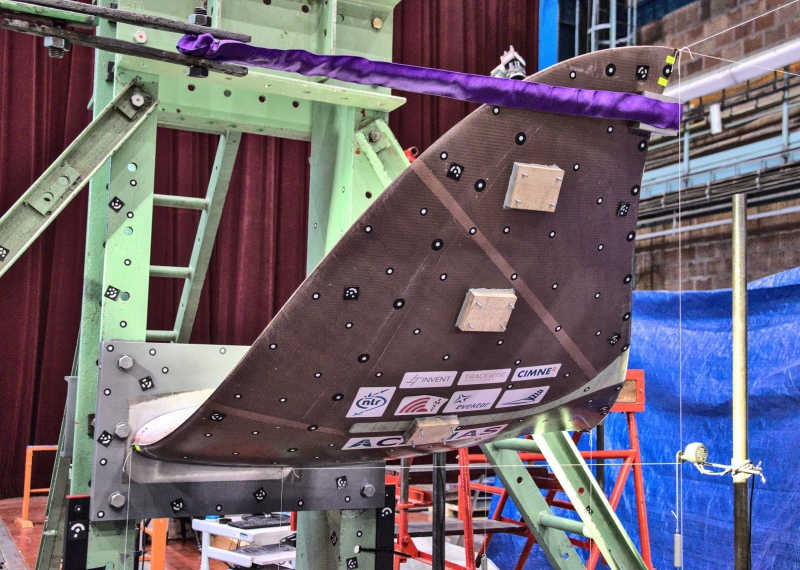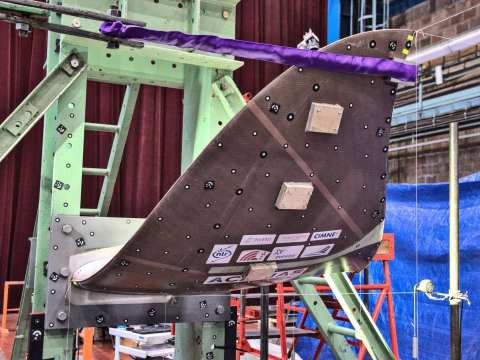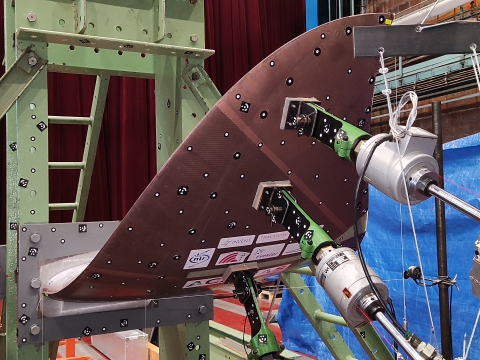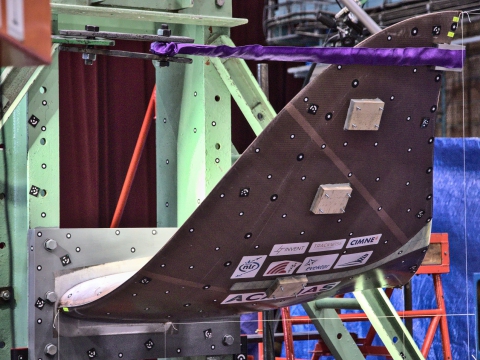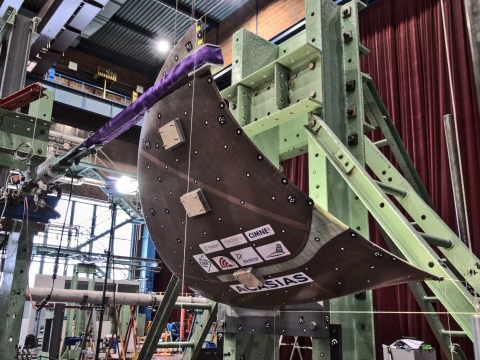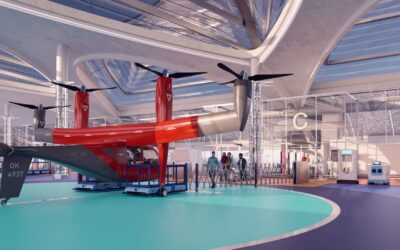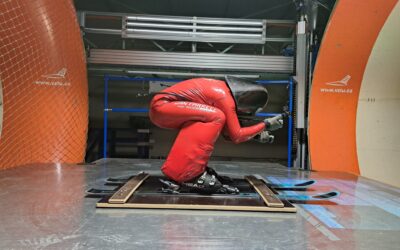As part of the finishing European ACASIAS project, VZLU experts in cooperation with Evektor, Invent (DE), Cimne (ES), Trackwise (UK), NLR (NL) and IMST (DE) have partake in development of a new type of multifunctional winglet with an integrated VHF antenna.
The main objective of the ACASIAS project is to contribute to the reduction of fuel consumption, lower emissions, and reduction of noise of future aircrafts by improving aerodynamic characteristics and facilitating the integration of new efficient propulsion systems, such as contra-rotating open rotor engines (CROR).
The project was focused on specific parts of regional commuters and airliners, such as development of an aircraft winglet for regional transport with an integrated VHF antenna, a fuselage panel with an integrated ASAC (Active Structural Acoustic Control) system to reduce cabin noise with minimal impact on weight, a composite stiffened ortho-grid fuselage panel for the integration of a Ku-band SATCOM antenna array and a Fibre Metal Laminate (FML) GLARE (Glass Laminate Aluminium Reinforced Epoxy) panel with integrated VHF communication slot antenna and GPS patch antennas.
VZLÚ participated in several project parts. A design of a winglet for a regional commuter that allowed integration of the VHF communication antenna was one of them. Numerical simulations and strength tests of the winglet against potential bird strike as well as experimental verification of the stiffness and structure strength against the design parameters and numerical simulations were also performed within the winglet design development. Several experimental verifications and evaluations of mechanical characteristics of materials and structure used in the design of structures with integrated antennas were also performed. The final part of the development process was an experimental verification of the mechanical parameters of a new type of winglet at VZLU with use of the most modern methods for experimental analysis, including monitoring the behaviour of the entire structure by optical methods. “These experiments confirmed very good agreement of numerical simulations with the actual behaviour of the new composite winglet structure,” confirms Roman Růžek from VZLU. VZLU also participated in evaluation of an influence of the integrated Ku-band STATCOM antenna in the fuselage panel of a transport aircraft on the mechanical properties of surrounding structure.
Overall, the positive effect of integrated antennas was not only on fuel consumption but also brought lower vibrations, noise reduction and reduced risk of damage due to collision with ground vehicles at the airport.
“Although it may not be completely obvious, there are quite many different antennas on the fuselage of airliners of all sizes. In addition to protruding communication antennas, the integration of Wi-Fi antennas, for example, has been addressed recently. Together, of course, all these antennas disrupt the air flow around the aircraft and thus increase consumption. Our intention was to integrate the antennas which are normally located on the fuselage to the parts of aircraft, such as winglets or skin panels. This will improve the aerodynamic characteristics of the aircraft, leading to lower consumption and at the same time lower risk of damaging antennas, ” adds Petr Vrchota from VZLÚ.
The ACASIAS (Advanced Concepts for AeroStructures with Integrated Antennas and Sensors) European project is under the Horizon 2020 framework program and has been implemented in close cooperation with the European Aviation Safety Agency (EASA), which will facilitate the future certification of emerging solutions.
The project coordinator is the NLR (NL) and in addition to VZLU and the above-mentioned companies also Fokker (NL), DLR (DE) and L-UP SAS (FR) participated in the ACASIAS project.

